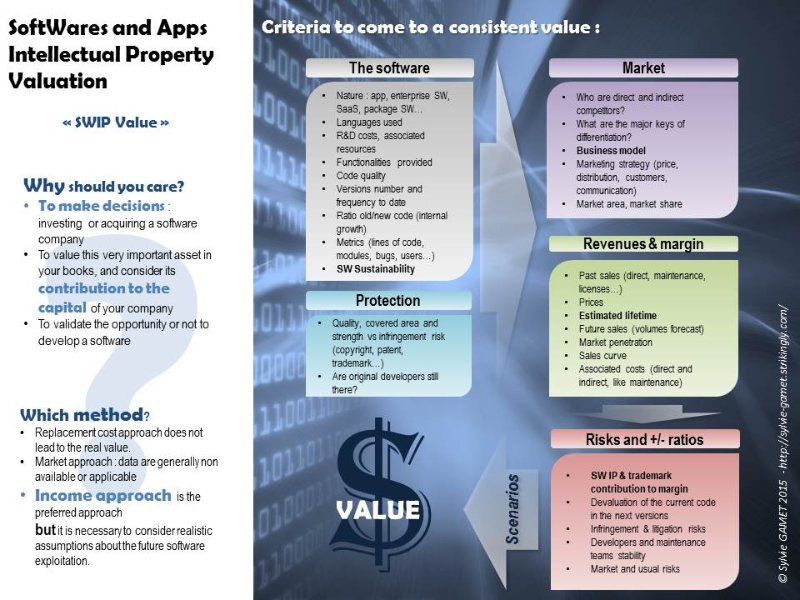Software, apps, or more generally what we call digital products, are intangible assets. They can be:
- estimated and they can be a contribution to the company’s capital. Most of the time this is done at the company’s creation or if you’re planning a potential entry of financial investors and want to be prepared for the purpose of negotiations.
- Estimated as intangible assets during assets transfer from a company to another, in order to integrate them in their accounting books.
In all those cases, we clearly have to question the real, or fair, value of these developments.
These intellectual property rights differ from other copyrights (such as music, videos), trademarks, or patents:
- They are subject to constant evolution and maintenance,
- Counterfeits are hard to detect,
- their legal protection can be complex,
- their tax treatment is also specific
Yet these developments, like any product, have to deal with market and ROI issues. It is therefore rather difficult to come to a relevant, objective value, which is realistic and as far as possible, indisputable.
In order to clarify your own appreciation of these particular assets, here are the criteria we use when it comes to estimating the value of a software or application (here, in the case of commercialized software or soon to be). We hope this will help you get a better understanding of your developments’ value.
Of course, each software is specific, and therefore, each evaluation is unique.
We very generally use the income approach. We often consider the replacement cost approach less relevant (mainly because it does not take into account the market). The market approach, which is based on studying similar products transactions is rarely applicable, for lack of substantiated, detailed and reliable data.
As a result, the main criteria we consider in a financial valuation of IT developments are:
The software and its technical and functional aspects:
- Nature of the developments: application, industrial program, SaaS, off-the-shelf software …
- The programming languages used, the architecture
- Development costs and associated resources
- The proposed features
- Coding quality
- The number and frequency of versions edited to date
- The old/new code ratio
- Quantitative indicators: number of lines of code, modules, bugs, users, etc.
- The potential durability of the software
The mode of protection of rights and the strength of this protection (barriers to entry):
- Nature of Ip rights (copyright, patent, trademark …), quality, seniority, geographical area covered, strength against the risk of counterfeiting, and copy
- Presence of the original developers?
The market :
- Who are the companies and products directly or indirectly competing?
- What are the main axes of differentiation?
- What is the business model?
- Marketing strategy (pricing policy, distribution, market segmentation, communication)
- Market Share and Market Extent
The expected turnover for the remaining life, the associated margins:
- Past sales (direct, maintenance, licensing agreements …)
- Price
- Estimated lifetime
- An estimate of future sales (volumes)
- Speed and mode of penetration of the market
- Sales curve
- Associated costs (direct and indirect, such as maintenance)
Operational risks and ratios, increasing or decreasing the value:
- contribution of the software IP rights to the realization of the operational margin
- Devaluation of existing code in future versions
- Risks of copying, counterfeiting, litigation
- The loyalty of the team of developers, hotline, maintenance
- Usual risks related to the operations
For any questions, feel free to contact us.


